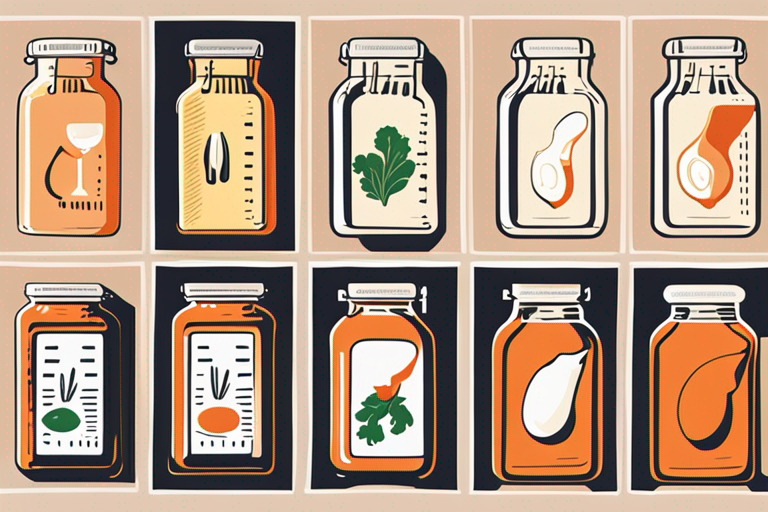
Can You Eat Ranch After the Expiration Date?
Get Your Free Food Safety Cheat Sheet
30 most common foods with instant answers. Print it and stick it on your fridge—completely free!
Can You Eat Ranch After the Expiration Date?
When you reach into your refrigerator and find a bottle of ranch dressing that has passed its expiration date, you may wonder if it's still safe to consume. In this blog post, we will explore the safety of eating ranch dressing after it has expired. We will provide you with valuable information, practical tips, and guidelines to help you make an informed decision about whether or not to enjoy that creamy dressing.
Understanding Expiration Dates on Ranch Dressing
What Do Expiration Dates Mean?
- "Sell By" Date: This date is more of a guideline for retailers, indicating how long the product should be displayed for sale. It doesn't necessarily mean the product is unsafe to consume after this date.
- "Best By" Date: This date suggests the peak quality and flavor of the product. It may still be safe to consume after this date, but the quality may degrade.
- "Use By" Date: This date is the manufacturer's recommendation for when the product should be consumed for the best quality. Consuming the product after this date may pose some risks.
Factors to Consider
- Storage Conditions: Proper storage can extend the shelf life of ranch dressing.
- Product Integrity: If the bottle is damaged or the dressing looks or smells off, it's best to discard it.
- Type of Ranch Dressing: Homemade ranch may have a shorter shelf life compared to commercially produced varieties.
Is Expired Ranch Dressing Safe to Eat?
Shelf Life of Ranch Dressing
- Unopened bottled ranch dressing: Can last for several months past the expiration date if stored properly.
- Opened bottled ranch dressing: Should be consumed within 1-2 months for best quality.
- Homemade ranch dressing: Typically lasts for about 1 week in the refrigerator.
Signs of Spoiled Ranch Dressing
- Unusual odor: If the ranch smells rancid or off, it's best to discard it.
- Texture: Any changes in texture, such as clumping or separation, may indicate spoilage.
- Appearance: Mold growth, discoloration, or unusual spots are signs of spoilage.
Risks of Consuming Expired Ranch Dressing
- Foodborne Illness: Consuming spoiled ranch dressing can lead to food poisoning, with symptoms like nausea, vomiting, and diarrhea.
- Decreased Nutritional Value: Expired ranch dressing may have reduced nutritional content and flavor.
Tips for Safely Storing Ranch Dressing
Proper Storage Guidelines
- Refrigeration: Always store ranch dressing in the refrigerator to maintain its freshness.
- Sealed Container: Use an airtight container to prevent contamination and preserve the flavor.
- Avoid Cross-Contamination: Do not double-dip with used utensils to prevent bacterial growth.
Maximizing Shelf Life
- Check Temperature: Ensure your refrigerator is set to the proper temperature (below 40°F or 4°C).
- Rotate Stock: Use the "first in, first out" rule to consume older bottles first.
- Labeling: Label homemade ranch dressing with the date of preparation for tracking freshness.
Conclusion
In conclusion, while it's generally safe to consume ranch dressing a little past its expiration date, it's crucial to use your judgment and consider various factors like storage conditions, signs of spoilage, and type of dressing. When in doubt, it's best to err on the side of caution and discard any ranch dressing that appears or smells off. By following proper storage guidelines and being mindful of the quality of the product, you can enjoy your favorite dressing safely and deliciously. Stay informed, stay safe, and enjoy your salads with confidence!

Authoritative Food Safety References
These agencies and university labs inform every tip and health precaution we publish.
USDA FoodKeeper – Cold Storage Guidelines
Official refrigerator, freezer, and pantry timelines maintained by the U.S. Department of Agriculture.
Visit USDA FoodKeeperFDA Produce Safety Rule & Grower Guidance
Field-to-fridge handling practices that prevent contamination of fruits, vegetables, and leafy greens.
Visit FDA Produce SafetyCDC Foodborne Illness Prevention Hub
Surveillance-backed guidance on pathogens, symptoms, and steps to reduce foodborne illness risk.
Visit CDC Food SafetyUC Davis Postharvest Technology Center
University research detailing optimal storage atmospheres for produce after harvest.
Visit UC Davis PostharvestPenn State Extension – Home Food Preservation & Safety
Peer-reviewed extension bulletins on safe canning, chilling, and reheating practices.
Visit Penn State ExtensionCan you eat ranch dressing after the expiration date?
How can you tell if ranch dressing has gone bad?
Can you extend the shelf life of ranch dressing?
Is it safe to consume ranch dressing if it has been refrigerated for a long time?
Can you freeze ranch dressing to prolong its shelf life?
Get Your Free Food Safety Cheat Sheet
30 most common foods with instant answers. Print it and stick it on your fridge—completely free! Want more? Upgrade to the complete guide with 70+ foods.
Scan your food directly and get instant safety info using our AI-powered camera feature.